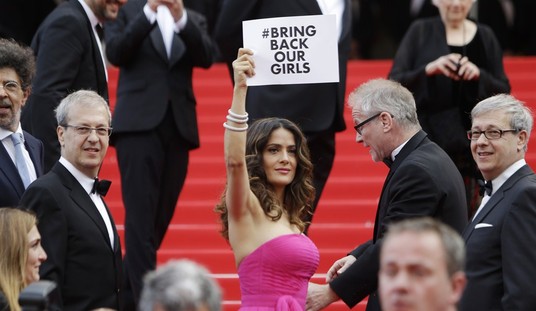On April 14, Latin American officials will gather in Colombia for the sixth Summit of the Americas. But the region’s oldest dictatorship will not be represented, to the delight of Washington and the dismay of Hugo Chávez. Colombian president Juan Manuel Santos did not invite Cuba to the summit, citing a lack of “consensus” among the other countries, though he did meet with Raúl Castro last month in Havana and said that “we really appreciate [Castro’s] desire to take part in the meeting.” Santos has worked hard to improve bilateral relations with leftist regimes in neighboring Venezuela and Ecuador, while also maintaining warm ties with the United States, so the decision on Cuba was a sensitive one. In the end, he managed to make the right choice without incurring too much diplomatic blowback from the Chávez bloc.
As it happens, Colombia and Cuba are each marking a significant anniversary this year. Ten years ago, both countries were at a crossroads. The South American nation was holding a presidential election amid terrible violence from drug-running Marxist rebels and paramilitaries. Meanwhile, Cuban dissident Oswaldo Payá was receiving global praise for his Varela Project, a petition drive aimed at forcing real democratic change within the Communist constitution.
A decade later, Colombia is a nation transformed — “a prospering dynamo,” in the words of journalist Mac Margolis — but Cuba is still ruled by a brutal dictatorship that has rejected political liberalization and is now desperately trying to stave off an economic crisis. Indeed, if Colombia symbolizes the enormous progress that Latin America has made in the new millennium, Cuba remains a stubborn relic of the region’s autocratic, impoverished past.
It may not be a member of the BRIC club (Brazil, Russia, India, China), but Colombia has been included in the so-called CIVETS bloc (Colombia, Indonesia, Vietnam, Egypt, Turkey, South Africa), another group of emerging-market countries with great economic potential. Joachim Bamrud, the executive editor of the Latin Trade Group, has said that “Colombia is set to be a star for many more years,” noting that it “offers a far easier business environment” than Brazil. The World Bank reports that Colombia now has one of the three “most business-friendly regulatory environments” in Latin America and the Caribbean. Under Presidents Uribe (2002–2010) and Santos, there have been astonishing reductions in violence, though we should acknowledge that Colombia still suffers from major security issues. (Brookings analyst Michael O’Hanlon correctly argues that the United States should increase military assistance to Bogotá.)
While Colombia was being transformed, the Cuban government was tightening its grip on dissent, despite the best efforts of Payá. His Varela Project stemmed from Article 88 of the 1976 Communist constitution, which allows citizens to propose laws if they can collect at least 10,000 signatures from eligible voters. Payá secured more than 10,000 supporters for his democratic-reform petition, and in May 2002 he presented it to the Cuban National Assembly. Just days later, Jimmy Carter discussed the Varela Project during a visit to Cuba, and the European Parliament subsequently honored Payá with its Sakharov Prize for Freedom of Thought. By that point, unfortunately, the Castro regime had cooked up its own sham “petition” and amended the constitution to reaffirm an ironclad commitment to Communism. Then, in early 2003, the government launched a massive crackdown, jailing dozens of human-right activists, including many allies of Payá.
When Pope Benedict XVI traveled to Cuba last month, he saw a country whose political system and economy appear to be stuck in a time warp. Prior to his arrival, many democracy advocates were jailed, lest they organize public protests. Cuban dissident Guillermo Fariñas, winner of the Sakharov Prize in 2010, called it “a wave of repression.” (After Benedict left the island, the imprisoned activists were released.) While Benedict urged Havana to introduce greater political freedoms, a senior Cuban official responded by telling reporters, “We are updating our economic model, but we are not talking about political reform.”
Speaking of the Cuban economic model, much has been made of Raúl Castro’s minor reforms, which have expanded opportunities for Cuban entrepreneurs and taken various other baby steps toward boosting private enterprise. Yet in the 2012 Heritage Foundation/Wall Street Journal Index of Economic Freedom, Cuba ranks 177th out of 179 countries, and it scores dead last for “investment freedom” and “property rights.” For that matter, only North Korea scores lower for “business freedom,” “financial freedom,” and “labor freedom.” The truth, as Yale historian Carlos Eire wrote last year, is that Castro’s reforms are “a desperate, ridiculous attempt to camouflage repression and maintain the current status quo.”
Over the past decade, Colombia has shown Latin America — and the world — what real change looks like. By contrast, Castro has left the Cuban economic system basically intact. As for free and fair elections, the regime no longer even pretends it is moving in that direction. Indeed, a decade after Payá brought his pro-democracy petition to the National Assembly, Cuba seems further from political freedom than ever.
This article is available in Spanish here.









Join the conversation as a VIP Member